Classification Of Hazardous Substances
The transport of dangerous and marine pollutant substances by vessels transporting by sea is regulated by the International Convention for the Life at the Sea (SOLAS) and the International Convention for the Convention of the Environment (MARPOL).
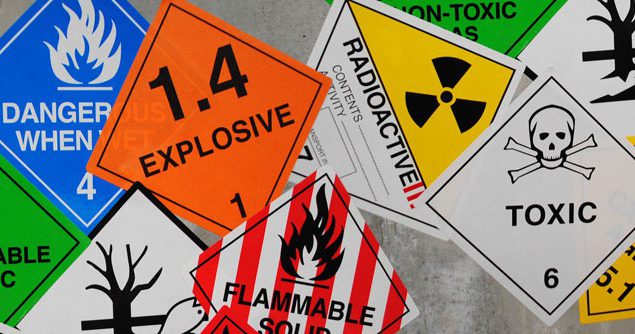
In the relevant sections of SOLAS and MARPOL, the International Maritime Dangerous Goods Code (IMDG) provides a detailed description of the necessary regulations and takes the provision of the law on the transport of these substances by sea. As of 1 January 2004, the IMDG Code was made compulsory.
For all types of transport (transport by sea, air, train, land and inland waterways), the classification and risk definition of dangerous goods is also made by the United Nations Committee of Experts on the Transport of Dangerous Goods (UN).
The dangerous goods classifications defined in these regulations are as follows:
Class 1: Explosives

Class 1.1: Mass and Abrupt Explosions
Contains explosives that may cause a massive explosion. It affects almost all loads in the event of an explosion.

Class 1.2: Part Throwers but Not Exploding in Mass
It contains explosives that are at risk of throwing parts but will not cause a massive explosion.

Class 1.3: Explosives with Flames
Contains explosives that are explosive at risk of fire, light explosion, slight explosion hazard, but not explosive in mass.

Class 1.4: Low Explosives
Contains explosives with a slight risk of explosion which do not exceed the container in which they are affected, and do not cause an explosion or fire outside.

Class 1.5: Difficult to Explode but Explode in Mass
It contains explosives that can explode in mass but have very low explosive sensitivity.

Class 1.6: Explosion-proof and non-explosive
It contains explosives that can be very difficult to explode, are very low in sensitivity, and also have no danger of mass explosion.
Class 2: Gases
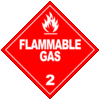
Class 2.1: Combustible Gases
454 kg (1001 lbs) and gaseous substances below 20 ° C (68 ° F). The pressures of these materials are 101.3kPa (14.7 psi) and the boiling points under this pressure are 20 ° C (68 ° F) or less. At 101.3 kPa (14.7psi) pressure and air mixtures below 13% are combustible. Or they are flammable at least 12% air mixture and 101.3kPa (14.7 psi) pressure regardless of lower limit.

Class 2.2: Combustible and Nontoxic Gases
This class includes pressurized gases, liquefied gases, pressurized cryogenic gases, compressed gases contained in a solution, and oxidizing gases. Non-flammable and non-toxic gases are gases not included in classes 2.1 and 2.3 with a pressure content of 280 kPa (40.6 psia) at 20 ° C (68 ° F).
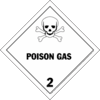
Class 2.3: Toxic Gases
These gases are known to be harmful to human health and pose a health hazard during transportation at temperatures of 20 ° C and below, at a pressure of 101.3 kPa (boiling points below 20 ° C or below) and are substances with an LC50 value above 5000 ml / m3 in animal tests although the human health hazards have not been proven.
Class 3: Flammable Liquids

Flammable liquids are substances with a flash point of not more than 60.5 ° C (141 ° F), or in liquid form, heated for carriage and with a flash point of 37.8 ° C (100 ° F) and above.
Class 4 : Flammable Solids
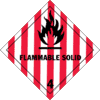
Class 4.1: Flammable Solids
Solids that are flammable as they are. These materials can be ignited by friction and their combustion rate is greater than 2.2 mm (0.087 inch) per second. Flammable metal powders, which all react in 10 minutes or less, are also included in this class. They are also thermally unstable, able to exert a strong exothermic reaction without the participation of air and are self-igniting. Explosives that are classified as Class 1 but have been activated, or substances specifically included in this class by the manufacturer.

Class 4.2: Self-Combustible Solids
Self-igniting substances are pyrophoric substances. These are substances that ignite in the fifth minute of contact with air or are heated when in contact with air without the need for an additional energy source.
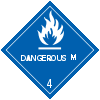
Class 4.3: Dangerous when in contact with water
These are substances which, in contact with water, emit flammable or toxic substances. The hazard measure is to extract more than 1 liter of gas per hour for 1 kg of substance.
Class 5 : Oxidizing Agents And Organic Peroxides

Class 5.1: Oxidizing Agents
They are substances which release or accelerate the combustion of other substances by releasing oxygen to such substances.
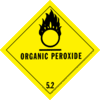
Class 5.2: Organic Peroxides
Organic peroxides (Class 5.2) are O-O containing oxygen. They may be considered as a derivative of hydrogen peroxide, produced by the substitution of one or more hydrogen atoms in water with organic radicals.
Class 6: Toxic And Microbial Infections

Class 6.1: Toxic Substances
Substances known to cause harm to humans during transport are classified as toxic substances. In addition, substances that are found to be toxic in animal tests are considered dangerous to humans and are included in this category.
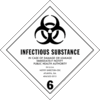
Class 6.2: Microbial Infections
Infectious disease content substances are substances that are known or suspected to carry a pathogen. Pathogens are microorganisms (bacteria, viruses, fungi, etc.) or other factors that cause disease in animals or humans.
Class 7: Radioactive Substance
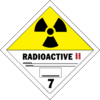
Radioactives
Substances bearing the yellow RADIOACTIVE III (LSA-III) label. In some radioactive substances, even if this label is not used, they must have a banner indicating radioactivity.
Class 8: Corrosive Substances
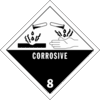
Corrosive
They are abrasive, thickness-reducing substances on human skin in contact with a certain period of time. Substances with corrosive effects on steel and aluminum are also included in this class.
Class 9: Other Dangerous Goods
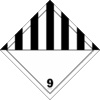
Other Dangerous Goods
Substances presenting a hazard during transport but which do not comply with any of the defined classes fall within this class. This class includes the following items:
– Anesthetics or other harmful substances. These are substances that may cause discomfort to the flight crew or ship personnel to the extent that they do not perform their duties.
– Substances with increased temperature, harmful substances, wastes harmful to human health or substances at risk of marine pollution.







